Mike Flanagan in 12 Steps: Alcoholism, Recovery and Horror Cinema
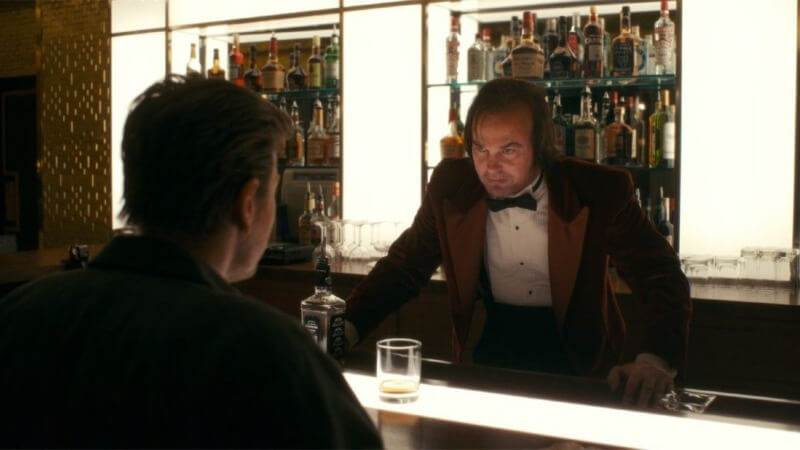
My name is Cullen; I’m an addict and alcoholic. My sobriety date is May 4, 2012.
Mike Flanagan’s debut feature film, Absentia, released on DVD to North America on March 13 of that year. For 52 days, two things were true: Absentia was available to general audiences, and I was not sober. At some point during that 52-day overlap—in the waning weeks of my drinking and drugging, the dark post-wreck milliseconds when the airbag that is your bottom comes screaming at your face—I watched it.
I was unimpressed.
I thought it looked cheap, the score was overbearing, and it teased intriguing ideas without the wherewithal and acting power to bring them across the finish line. My response was, “I like where you’re going, kid—wake me when you get there.” A month or so later, my world imploded.
I say “imploded,” because I am what’s known as a “high bottom.” Unlike low-bottom cases, my life of active addiction was not defined by the presence of things—DUIs, toxic relationships—but by their absence. I couldn’t lose the job, the car, or the marriage, because I didn’t have any of them. I chipped my world ever smaller until I was a microcosmos of one, with a howling void at its center. So on May 4, 2012, while Flanagan was in pre-production on his first studio picture, I punched my last ticket. After a sleepless night, a raw walking nerve named Cullen dragged himself to a meeting.
When you’re new, they warn you that getting sober doesn’t mean your life will automatically blossom. Thankfully, I was two years clean by the time things went sideways again. The threat of eviction that would lead to a summer of crashing on an AA friend’s couch began on April 7, 2014, with a landlord email stating I was $891 behind on my rent. For most people, the week following that email would be an asinine time to spend money at a movie theater, but I am not most people. So I went to see Oculus. I left the theater with two thoughts in my head: That Mike Flanagan was the most exciting new voice in mainstream horror, and that I should probably give Absentia another try. And later: How did I not realize this film is about recovery?
My approach to film analysis combines an intense interest in auteurism with a general disinterest in the personal lives of the authors themselves. Without seeking to learn much about Mike Flanagan the man, I assumed he must be sober and working a program. He communicates it so intimately, I thought—denial’s dance, grappling with the past while trying to jigsaw the future, untying family knots with numb fingers, the dawning awareness of patterns, the gift of desperation that yields hope by the sliver. Then I read Flanagan’s own account, saying he didn’t get sober until 2018, partway through making Doctor Sleep.
Wait—you mean the guy who wrote The Haunting of Hill House was still drinking? The nuanced understanding of the claw-scrabble back from the cliff while dodging siblings’ old stories about you being the family screwup? The guy who wrote Oculus, where an inherited obsession, a refusal to let go and walk away, ruins generations? He wasn’t sober yet?
A lot has been written about Flanagan’s addiction and recovery themes, but it tends to focus on the works where they’re most explicit, especially Doctor Sleep and Midnight Mass. Critics who tackle the larger filmography seem more interested in his approach to religion, trauma, and family dysfunction. If you’re a normie, allow me to explain why your sober friend is laughing right now: There is no difference. Those things are so intertwined with the disease of addiction that to address either without the other makes no sense.
Today, there are 12 major works in the Mike Flanagan oeuvre—one for each step in the AA program. This week, The Life of Chuck will open wide, marking what seems to be a new phase. It’s his first feature film after six years of television, and his first venture outside the horror genre. It’s also number 13, so let’s hope he doesn’t try to 13th-step anyone. (Readers not hip: don’t worry about it.)
Before The Life of Chuck drops, I thought I’d take a crack at (what I believe to be) the first assessment of the whole Flanaverse through a sobriety lens. To make it interesting, I’ll look at each work in the context of a single step, irrespective of chronological or any other order save for what makes sense in the program’s sequence.
Two things before we start. First, I’m not here to recruit anyone, nor do I represent AA or any related body. These are simply my takes as a horror critic, sober person, and Flanboy. That being said, if something here resonates with you, my contact info is below. Second, there’s a lot of capital-G-God in the language of the steps. These days, all but the most prescriptive groups take a liberal view of the god of our understanding; many prefer the less loaded “higher power.” When you see “god” written in lowercase, you’ll know the language is mine. I myself am a hair’s breadth from atheism, and Flanagan identifies as a lapsed Catholic. Because so much of his work grapples with belief and acceptance, a little ambiguity here is appropriate. Just don’t let all the god talk throw you off.
With that out of the way, and with a caution that there are spoilers ahead, let’s go to our first meeting and see if we can get through it dry-eyed.
![]()
Step One: Gerald’s Game (2017)
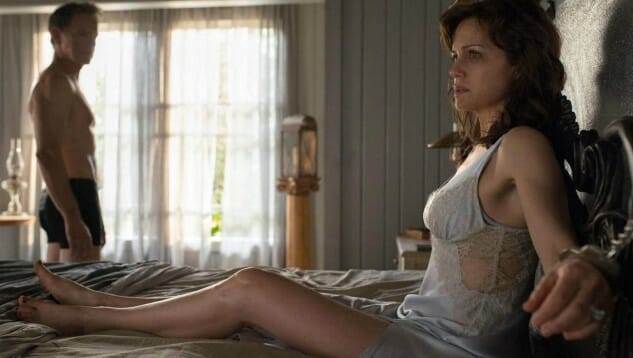
We admitted we were powerless over alcohol—that our lives had become unmanageable.
Flanagan’s first Stephen King adaptation, like the famously sober novelist’s earlier Misery, can be read as an allegory for imprisonment by addiction. The film’s protagonist Jessie (Flanagan regular Carla Gugino) finds herself handcuffed to a bed after her husband dies during a BDSM game in an isolated vacation home. In her confinement, she reflects on a childhood experience at another vacation home, when she was sexually assaulted by her father during a solar eclipse.
That em dash in the middle of step one does some heavy lifting, and the trick is integrating its halves. Some addicts struggle with admitting powerlessness, and some with unmanageability. Jessie’s experience rhymes with my own: The powerlessness is self-evident. She’s in a situation where she cannot free herself. The unmanageability piece, though—the realization that your life was out of control even before the handcuffs—slips in the back door like a moonlight prowler. Alone with her thoughts, the picture of vulnerability, Jessie reckons with the unhealthy patterns that have haunted her life.
I have to be careful here. As a man, and someone who did not experience childhood sexual abuse, I cannot write with any authority about its effects. To use sexual assault trauma as a mere story mechanic, or to glibly ascribe a life’s worth of experiences to it, is not respectful of real-life survivors. But childhood abuse and neglect are common parts of alcoholics’ stories. Jessie’s abuse seems to be one of the things that brought her into the orbit of manipulative men like husband Gerald; men, though smaller and less powerful than she, whose positions allowed their shadows to eclipse her brightness.
Step Two: Before I Wake (2016)
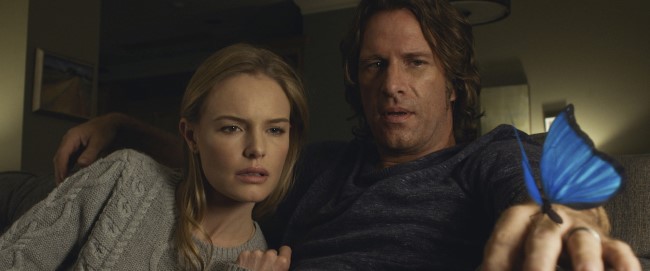
Came to believe that a power greater than ourselves could restore us to sanity.
Cody (Jacob Tremblay) is an 8-year-old orphan who dreams on the outside. When his dreams are pleasant, this strange power delights his new foster parents, Jessie and Mark (Kate Bosworth and Thomas Jane). But when the scourge of Cody’s nightmares, the Canker Man, stalks our reality, the stakes can be dire. Once the boy wakes, the Canker Man disappears, but anybody he took is gone forever.
Before I Wake is our first glimpse of a common Mike Flanagan theme: characters who cope with grief or guilt by misplacing faith in a supernatural power they don’t understand. They think they’ve found a cheat code to bypass the difficult work of acceptance. Before I Wake’s Jessie (another Jessie!) encourages Cody to dream about her dead son Sean, so she can see him again, if only as a projection. But by the time she realizes the real-world destruction Cody’s power can wreak, it’s too late.
Like addicts trying to get clean, grieving parents often throw themselves on a higher power’s mercy. I know, because I was the Cody to someone’s Sean. Some sober people say that, while drinking, they made alcohol their higher power. Like the dubious mystic solutions Flanagan’s characters turn to, it helped at first.
Eventually, consequences forced the admission that the thing they turned to for relief had become rapacious. The Canker Man is the dark flipside of this solace, and like my own drugging and drinking, it subtracts things from your life. The reveal that the boogeyman himself is Cody’s distorted memory of his mother’s final illness (“canker” is a childish misreading of “cancer”) cements the point: A higher power is something that moves us forward, not something that traps us in a dream-cycle reliving the past.
Step Three: The Midnight Club (2022)
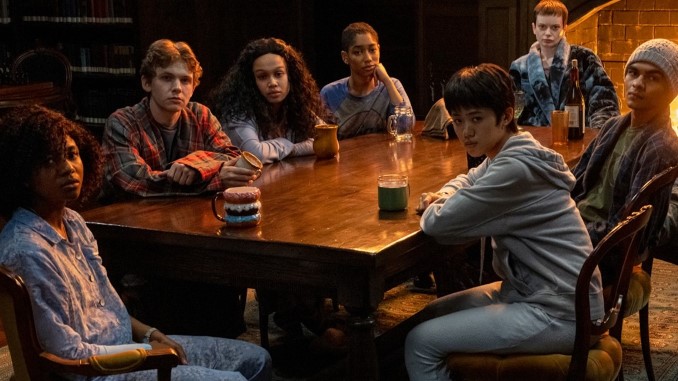
Made a decision to turn our will and our lives over to the care of [the God of our understanding.]
Brightcliffe, the youth hospice that serves as The Midnight Club’s setting, is unquestionably haunted. But protagonist Ilonka’s (Iman Benson) attempts to find some occult way to banish her cancer are shown as misguided and dangerous. In typical Flanagan character fashion, Ilonka mistakes shortcuts for solutions. Both in the main narrative and in the stories the teens share with each other, attempts to cheat fate backfire at every turn. The hospice’s founder, Dr. Stanton (Heather Langenkamp), addresses the pugnacious rhetoric we use to talk about terminal illness: “The language of battle… ‘We’re gonna fight this thing.’ […] Brightcliffe isn’t about battles. It’s about permission to leave the battlefield.”
The third step can seem paradoxical to newcomers. “I came here to beat my addiction, and you’re saying surrender?” But if, like the Jessies of the first two steps, we’ve admitted powerlessness and recognized our exertions of will have been fruitless, leaving the battlefield is the only answer left. The lesson of both Brightcliffe and step three is that in surrender is serenity.
Newcomers struggling with the god notion are often encouraged to use their AA group itself as a higher power. Some remove this scaffold as their spiritual understanding evolves; others never do. For them, a stable support group—caring and non-judgmental, stronger as a unit than any individual member—checks all the higher power boxes.
The titular Midnight Club is a social gathering, a creative outlet, group therapy shaken loose from formal daytime protocols—and a pact. Members show up for each other, even if they are angry, lonely, or tired. In coming together to seek evidence of a higher power, they have accidentally created one.
Step Four: The Haunting of Hill House (2018)
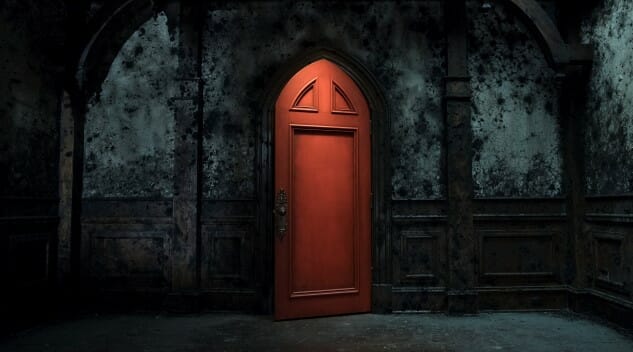
Made a searching and fearless moral inventory of ourselves.
26 years after Olivia Crain (Carla Gugino again) dies, seemingly by her own hand, in the titular haunted mansion, her husband and their four remaining children reunite to process the eerily similar death of the family’s youngest member. Using parallel timelines, The Haunting of Hill House unpacks how the siblings’ childhood experiences map onto their adult challenges.
Certain coincidences of biography make me relate to Luke Crain (Oliver Jackson-Cohen) more than any other Flanaverse character. We are the youngest sons of mothers who struggled with suicidal ideation. We have two older sisters each. We are the ones who got clean, but took time to shed our reputations as the cheerful family reprobates.
Of the various 12-step slogans I’ve peppered this essay with, my favorite is, “Your family knows how to push your buttons, because they’re the ones who installed them.” It’s not just addiction’s genetic component. The patterns that influence our relationships with substances become ingrained early, so any fearless inventory has to start in the family home. In the series, the home itself, embodied in Hill House, forces each Crain’s buried dysfunction into sunlight.
The Haunting of Hill House remains the premier usage of what I call Flanagan’s folding timeline. Flashbacks and present-day scenes intercut and lie atop each other, linked by places, people, events, and emotions. Causal relationships are both clarified and complicated, because cause and effect seem to be happening at once. A good fourth step requires the recognition that nothing still influencing us can really be in the past. The word “inventory” denotes not a historical document, but a list of what we carry. Like the Bent-Neck Lady haunting her childhood self, corrupting our understanding of time, anything that shapes us is always happening in the present tense.
Step Five: The Fall of the House of Usher (2023)
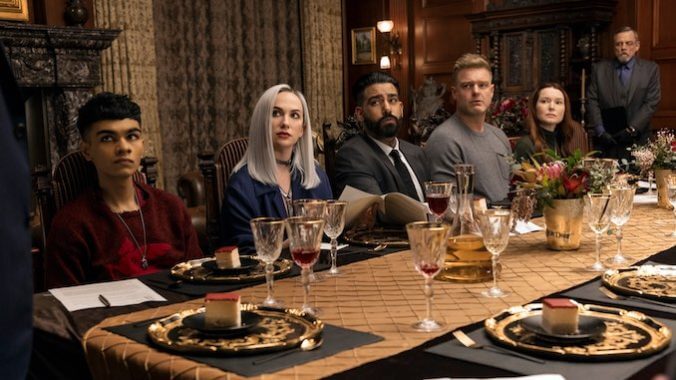
Admitted to God, to ourselves, and to another human being the exact nature of our wrongs.
The framing device for the final series Mike Flanagan produced for Netflix finds Roderick Usher (Bruce Greenwood), Big Pharma robber-baron and toxic patriarch, narrating his life story to an old nemesis. As a quilt stitched from Edgar Allan Poe’s entire bibliography, it feels as much like an adaptation as an homage to Poe himself.
Roderick’s confession, devoted to explaining bizarre deaths, got me thinking about Poe’s own supposedly mysterious demise. It’s stupidly obvious my fellow Virginian drank himself to death, and the details that mystify normies make perfect sense to those of us who might, say, make an unscheduled stop in a strange city for a weeklong bender and wake up in someone else’s clothes. That’s just one example of something that would baffle a normal person, but alcoholics understand intuitively. Which is why it’s so important to pick the right person to hear your fifth step.
By the book, you can deliver it to anyone, but most people choose their sponsor. At its best, step five is a gentle exchange with a peer who sincerely wants to help us heal. Roderick Usher, ever the egoist, chooses an antagonistic partner for his makeshift fifth step. Seemingly with some vague notion that confession is good for the soul, he’s merely ready to list his wrongs, not own them. There’s a reason this confession comes less than halfway through one’s step work. Reconciliation has to follow truth, and Usher, knowing he’ll soon be dead, shows no interest in changing. He calls it a “reckoning,” but treats it more like a victory lap.
Roderick’s family, and his world, are swimming in booze, powders, and pills—not the least of which is Ligodone, the opioid foundation of Roderick’s fortune, and the floorboards the show’s heart beats beneath. Roderick’s wife Juno (Ruth Codd) is a heroin addict who replaced smack with a Ligodone dependency. Juno tells her husband she wants to get clean from the supposedly non-addictive drug, but he scorns her. When she calls him a monster, he replies, “I’m Victor Frankenstein. […] You are my perfect creation.” These are not the words of a repentant man, nor one ready to undertake anything resembling a fifth step.
Step Six: Absentia (2011)
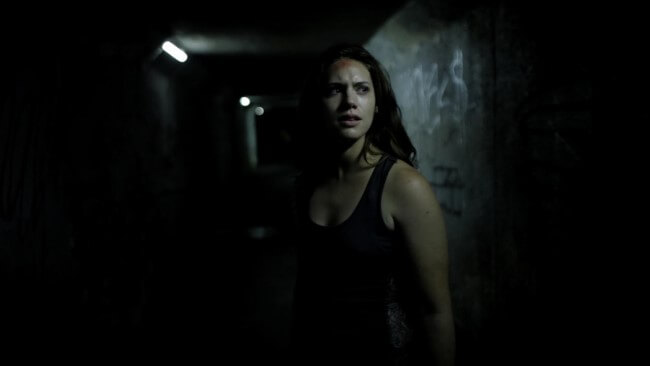
Were entirely ready to have God remove all these defects of character.
Speaking of readiness, we’ve arrived at the only step to use the word—and the only Flanagan work that portrays relapse. Here I must acknowledge relapse as a part of many recovering people’s stories, even if it’s not part of mine. Still, if you’re going to do it, between steps five and six is a popular time. A less-than-honest fifth step can be a shaky foundation. So can a reluctance to give up unhealthy but comfortable coping strategies.
Seven years after her husband’s unexplained disappearance, Tricia (Courtney Bell) is legally able to have him declared dead. Her sister Callie (Katie Parker), a drug addict fresh from rehab, is there to support her. As Tricia readies the death certificate paperwork, Callie becomes convinced that the disappearance is connected to a supernatural creature inhabiting a nearby tunnel.
Reflecting on those final weeks before getting clean, I wonder if Absentia really misfired on me, or if it hit too close to home. As I described, I was a high-bottom case whose illness manifested as a hollow at the center of my world, the proverbial hole in the doughnut. Just such an absence permeates this film, all the way to its title, and Tricia struggles with unreadiness, or uncertainty, about dealing with it. Maybe I saw too much of my crisis in hers—we both knew our days of kicking the can down the road were numbered.
Even before she relapses on drugs, Callie’s sobriety is far from perfect. She drinks wine, insisting it doesn’t count, and keeps her paraphernalia in a box under the bed. The lesson of step six: If you’re still attached to any of your old, unhealthy ways of regulating, they are still attached to you. The film’s final image is an inhuman hand on Callie’s shoulder, signifying ownership and the refusal to let go. Visually, the box in the darkness beneath the bed is connected to the troll under the bridge. It’s hungry for souls, and if you gamble with it, sooner or later it will come to collect.
Step Seven: Ouija: Origin of Evil (2016)
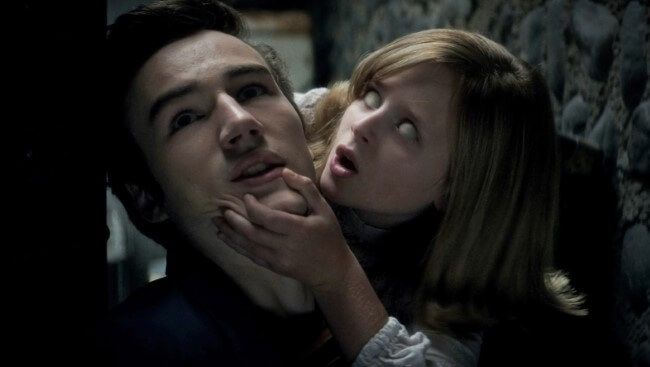
Humbly asked [God] to remove our shortcomings.
It’s a familiar Mike Flanagan setup. A grieving person, often a skeptic, is confronted with impossible-to-refute evidence of the paranormal. Their worldview thus rocked, they leap too quickly to place their faith and fate in the newly discovered power before they fully understand it. It happens in Before I Wake and Absentia, and it will happen at least once more before we’re done here. At the start of Flanagan’s Ouija sequel, Alice (Elizabeth Reaser) is a charlatan who makes a living on fake seances. When her daughter adds a spirit board to the act, the family unwittingly lets in a malevolent spirit that poses as Alice’s deceased husband.
The seventh step prayer asks for removal of “every single defect of character which stands in the way of my usefulness to […] my fellows.” Now that Alice has convincing proof of an afterlife, the ex-huckster is determined to change her ways, and use the board to help the people she was cheating before. As we’ve discussed, it’s easy for newcomers to make the wrong thing their higher power. Like the ghost behind the spirit board, alcohol knows what we want to hear and shows us what we want to see. The wrongdoer in Ouija: Origin of Evil uses the same illusions and cold reading techniques that Alice did in her seances. The master’s tools will never dismantle the master’s house, so regardless of how pure her intentions, Alice will need more than chicanery to turn things around.
The middle steps have been hard for our characters. Roderick isn’t really interested in confessing, and Tricia and Callie aren’t entirely ready to let go. Alice gets a little closer. She picks up that thousand-pound telephone with the sincere intention of calling her sponsor. She just dials the wrong number.
Step Eight: Oculus (2013)

Made a list of all persons we had harmed, and became willing to make amends to them all.
Flanagan debuts his origami timelines here, and as in The Haunting of Hill House, blended flashbacks lay bare the boomerang past, especially when it comes to family dysfunction. Some 11 years ago, siblings Kaylie (Karen Gillan) and Tim (Brenton Thwaites) watched their parents die violently, via a haunted antique mirror that drove them to madness and murder. In the present day, Tim reunites with Kaylie upon his discharge from a psychiatric hospital. Kaylie has acquired the mirror and wants to clear her family’s name by proving its evil before destroying it, but Tim no longer believes in the mirror curse. He insists that mental illness is to blame for the tragedy.
As the son of a man with 18 years in the program, and the grandson of two more problem drinkers, I’ve never doubted that addiction is a family disease. Oculus plays coy with how much mental illness factored into the family’s sorrows, and Kaylie may not have inherited addiction from her father Alan (Rory Cochrane), but she certainly inherited his obsession. Dad kept secrets. When he was alive, the mirror was Alan’s illicit lover. He hung it in his private space and invented excuses to lock himself away with it. The adult Kaylie is obsessed with the same mirror. Like many a Flanagan character before and since, she could let go, walk away, and live a happy life, but she doesn’t. Instead, she makes lists.
But this is no eighth step. Instead of listing people she has harmed, she lists the mirror’s victims. She meticulously researches its history, cataloguing all who fell prey to its manipulation. With an engineer’s precision, she makes a plan to defeat the mirror, complete with redundant failsafes and a “kill switch” to make sure it is destroyed. In short, she tries to think her way out of the problem. But curses, like madness and addiction, do not respect the intellect.
Like Alice, Kaylie wants to do right by her family … but she also wants revenge. If she pointed her analysis inward, she’d know the best way is to sweep away the cobwebs. Instead, like so many addicts before her, she’s ruined by the same obsession that ruined her father.
Step Nine: Midnight Mass (2021)

Made direct amends to such people wherever possible, except when to do so would injure them or others.
In the words of Bob Dylan, “Try to make things better for someone, sometimes you just end up making it a thousand times worse.” Midnight Mass’s Father Paul (Hamish Linklater) learns this when he returns to the struggling community of Crockett Island with a vampire in tow, believing it to be an angel. Paul, whose real name is Pruitt, is an elderly priest with a lover named Mildred who suffers from dementia, and a secret daughter they begat in violation of Pruitt’s holy orders. In his new guise as Paul, youth restored by the vampire’s bite, the priest wants to share this miracle with Mildred and make up for the years they lost. Meanwhile, another young man named Riley (Zach Gilford) also returns to Crockett Island to atone. Riley is an alcoholic, fresh from a prison term for a drunk driving accident that killed a young woman. Father Paul offers to save Riley a daily trip to the mainland for his court-ordered AA meetings by facilitating one-on-one meetings on the island. In the debates between Paul’s blind faith and Riley’s well-meaning skepticism, writes Flanagan, “you’re basically looking directly into my conflicted brain over many, many years.”
Father Paul is our last example of a Mike Flanagan character who trusts the wrong power. With his genuine belief in the vampire as an angel, he’s a tragic figure who does the wrong thing for the right reasons. By the time he realizes what extremes his followers will go to in the name of his message, it’s too late for the island. His ill-considered amends have backfired.
For people like Riley, who cannot make direct amends to the person he killed, AA encourages “living amends.” By sacrificing himself to warn Erin, thereby preventing future harm, he is truly living his program, even as he dies. He may not believe in an omnipotent, beneficent god, but he surely believes that one person can, and must, do ego-agnostic right on behalf of others.
Step Ten: The Haunting of Bly Manor (2020)
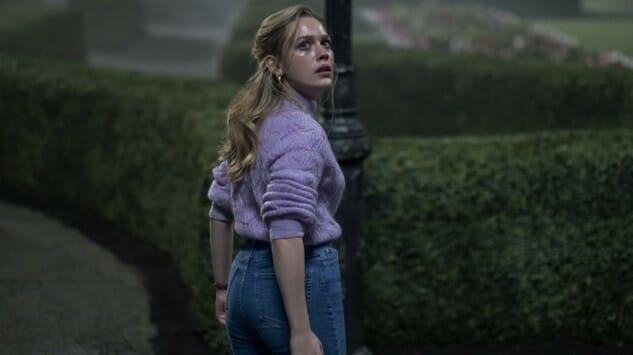
Continued to take personal inventory, and when we were wrong, promptly admitted it.
Dani and Jamie, The Haunting of Bly Manor’s star-crossed lovers, repeat a mantra to each other that will be familiar to anyone in the recovery community: “One day at a time.” After Dani (Victoria Pedretti) resolves the crisis at Bly Manor by allowing the ghost of the Lady in the Lake to possess her, she and Jamie (Amelia Eve) move to America for a new life. The ghost does not immediately take over Dani’s body, but she knows it’s only a matter of time before it returns. Dani likens Viola’s spirit to a “beast in the jungle,” a stalking inevitability, not always at the forefront of her thoughts, but never far. She can’t imagine making long-term plans, because she doesn’t know how long she has left.
Sober people like to say their disease is “doing push-ups in the parking lot” as it waits for them. The ever-present threat of relapse demands vigilance. Like Dani and Jamie building their life in Viola’s shadow, the work is ongoing and continuous. When I was new, I couldn’t countenance the prospect of getting a year under my belt, let alone never drinking again. I was told to think one day at a time. Like Dani, I watched the days pile up, each one a quiet gift, until suddenly years had passed and I had made a tidy life for myself.
As the older Jamie (Carla Gugino once more) observes, love stories and ghost stories are the same thing, because they both have to reckon with the certainty of death. The Haunting of Bly Manor ends with the same image as Absentia: a spectral hand on a character’s shoulder. In this case, it’s Dani’s hand on Jamie’s shoulder, speaking not of possession but of companionship. But here it’s paired with the image of an open door. Alcoholics Anonymous, discussing the serenity that comes as a result of step nine, says, “We will not regret the past, nor wish to shut the door on it.” The image of an open door is a powerful one for recovering people, and Bly Manor is not the only time Flanagan has ended a story with one.
Step Eleven: Hush (2016)

Sought through prayer and meditation to improve our conscious contact with God, praying only for knowledge of [God’s] will for us and the power to carry that out.
At first blush, Hush is an exercise in pure suspense mechanics, axing the headier themes typical of Flanagan’s work. But on reappraisal, it rhymes with Gerald’s Game in important ways. Both are studies of one person’s struggle to survive in abject confinement, and both celebrate the power of claiming your narrative.
Newcomers to sobriety who struggle with “the god thing” need to navigate their way to a higher power of their understanding, even if only temporary. As noted above, many choose the AA community itself. I chose art. The closest I’d come to feeling the touch of the divine was in perfectly crafted music, poetry, images, or stories. Hush’s Maddie (Kate Siegel) is a novelist by trade, and early in the film she describes her storytelling process as an internal conversation. “Any possible outcome is like a movie in my head with many endings,” she says. To find out where the story is going, she interrogates the voice in her head until the right path becomes clear. She uses the same process late in the film to figure out how to defeat her home-invading tormentor.
Artists have all kinds of ways of describing their creativity’s source. Whether attributing it to ethereal power or the buried subconscious, most agree that artistic impulses come from somewhere other than the quotidian intellect. Maddie, deaf since childhood, calls it a voice in her head, and says it sounds like her mother.
Since prayer and meditation look different for everybody, we’ll focus on the eleventh step’s end rather than its means. If Maddie is like me, and her higher power is the creative spark, the miracle that enables flawed humans to make transcendent art, then her “writer brain”—with the caring, guidance, and patience of a parent—is both asserting its will and giving her the power to survive.
Step Twelve: Doctor Sleep (2019)

Having had a spiritual awakening as the result of these steps, we tried to carry this message to alcoholics and to practice these principles in all our affairs.
Recently I was in a meeting where a man was telling a story about being in jail for malicious wounding. “I tried to kill a guy,” he said, with the aw-shucks delivery a normal person might use when discussing a parking ticket. The listeners nodded along, nonplussed. We are hard to shock. I remembered the section in Doctor Sleep where Billy (Cliff Curtis), Dan’s AA sponsor, agrees to drive 1,200 miles to dig a hole at an isolated industrial building because a middle-schooler had a psychic vision of a murder there. When my wife said, “Gee, that Billy is a real friend,” I replied, “This might not even be the weirdest thing a sponsee has asked him for.”
Dan Torrance (Ewan McGregor), the psychic boy from The Shining, has grown up to be a low-bottom drunk. The film follows both his sobriety journey and his relationship with a fellow clairvoyant, the young Abra (Kyliegh Curran), targeted by a group of psychic vampires who feed on telepaths.
There is a midcentury addition to the AA canon called the Responsibility Statement, written in 1965 for an international convention. It reads, “When anyone, anywhere, reaches out for help, I want the hand of AA always to be there. And for that: I am responsible.”
The statement’s spirit is all over Doctor Sleep. Billy welcomes Dan into the AA fellowship with easy kindness because “I know that look.” Dan also belongs to another group: telepaths, or people who “shine.” When Abra first reaches out, Dan advises her to hide her shine and minimize exposure to those who seek to hurt her. Eventually, perhaps inspired by Billy’s example, he agrees to help. Both Dan and Billy end up laying down their lives for her protection. This kind of selflessness seems impossible to normal people, but it’s all in a day’s work for those who take their pledge of responsibility seriously. When someone needs help, we show up.
Dan’s chapter ends where it began: back at the Overlook Hotel, where he unleashes the ghosts of his past and sacrifices himself for Abra. Even as the Overlook burns, its front door stands open. Doctor Sleep’s ending evokes Bly Manor’s: A protagonist named Danny (or Dani), who plays host to dangerous spirits, sacrifices themself for another’s safety, and we’re left with the image of an open door. Don’t close the door on your past; there might be something in there that can help somebody. But the door Dan leaves open (or at least its symbolic twin) is shut a scene later by Abra in the film’s final image. She has grown from his sponsorship and learned from his journey; she now begins her own.
It occurs to me that my praise of self-sacrifices like Dan’s, Dani’s, and Riley’s as embodying 12-step principles might give some readers the wrong idea. AA is not a death cult—nor any other kind of cult for that matter. (Yes, I’ve heard the arguments.) In horror, death can symbolize lots of things, transgression or transition or transcendence. But lit-crit aside, death in horror also means death. Addiction is a fatal disease, and if you spend enough time in 12-step rooms, you’ll encounter it. To my mind, alcoholics are uniquely qualified to write about what it’s like to be stalked by a cunning and baffling power—one that won’t stop, one that wants you dead and your friends too.
![]()
Now that we’ve plucked at the threads of recovery woven through the director’s oeuvre, what do we make of the fact that, by his own account, he wasn’t sober for the first half of it? Am I grasping at straws, contorting plain old ghost stories to fit a framework I’d already decided on before I found out half was invalid? You’re allowed to think that. But I know that the first verb of the first step is “admitted.” Not realized, or learned, or discovered. You can’t admit something unless you already know it to be true. I also know that the muse, the “writer brain,” whatever you call the artistic polestar, is always steps ahead of the conscious mind when it comes to self-knowledge. Flanagan recognizes, as far back as his 2003 student film Ghosts of Hamilton Street, “an escalating subconscious urgency in the way I was talking about alcoholism and addiction.” Anyone who can see the woods around them can also see the path ahead, and it’d be no surprise if the master of the folding timeline—of stacking past, present, and future like a barback stacks shot glasses—had known what was coming and processed it through art. He would be far from the first.
Mike Flanagan’s professional career maps neatly onto my own sobriety journey. I just celebrated my 13th anniversary, and next month Flanagan will release his 13th chapter. For 13 years, every time I’ve visited or revisited his work, it’s felt like one of those musty church basement homecomings. I can smell the cheap coffee and hear the folding chairs clang, and I know I’m not alone. We have our own Midnight Club, you know, where we tell our stories, look death in the face, and say “Surely one day, but not today if I can help it.”
So if you find yourself feeling like a Flanagan character—stuck in cycles, replaying old laments on new instruments, not sure if you’re processing trauma or reenacting it—you might be a club member and not even know it.
I can’t promise the coffee will be good, but there’s always room at the table.
Cullen Wade (he/him) is a writer and high school teacher from Charlottesville, VA, USA. He is the author of S(p)lasher Flicks: The Swimming Pool in Horror Cinema, out in 2025 from McFarland Books. His film writing has appeared in Night Tide Magazine, Horror Homeroom, HorrorGeekLife, and Deaf Sparrow. Follow him on Bluesky @cullenwade.bsky.social and Letterboxd @tobe_whooper.